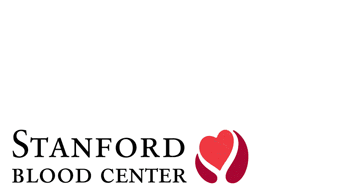Uncategorized
August 12, 2011 at 10:12 am
Published by Stanford Blood Center
By Billie Rubin
Towards the end of WWI, blood collection equipment consisted of a 1,000cc glass bottle with two perforated rubber stoppers. Glass tubing through each stopper was attached to rubber tubing, each with a needle at the end. One needle was for the donor, the other for the patient (probably one soldier to another), and suction was created with a syringe.
July 29, 2011 at 3:32 pm
Published by Stanford Blood Center
By Billie Rubin
In an interview with National Public Radio (NPR), Dr. Christine Cserti-Gazdewich, a hematologist at the University of Toronto, educates us on the history of blood types.
July 15, 2011 at 3:28 pm
Published by Stanford Blood Center
By Billie Rubin
Cryoprecipitate is a blood product made from frozen plasma. The plasma is slowly thawed, then sent through a centrifuge, a machine that spins and sorts blood components based on their masses. The "cold precipitate" protein that is left behind after most of the liquid plasma is removed is the cryoprecipitate.
July 8, 2011 at 11:24 am
Published by Stanford Blood Center
By Billie Rubin
Red blood cells are born in the bone marrow of our large bones at a rate of 2 million every second! Our bone marrow is a heavy-duty erythropoietic ward.
June 3, 2011 at 3:18 pm
Published by Stanford Blood Center
By Billie Rubin
Guess who regulates how many red blood cells (RBCs) we need at any given time. Bone marrow? Liver? Spleen? Your lungs? Give up? It's your kidneys. Yup, they don't just make urine. It all starts when those little kidneys sense the level of oxygen in our blood. When the oxygen level is low, the kidneys put out a hormone called erythropoietin.
May 20, 2011 at 9:31 am
Published by Stanford Blood Center
By Billie Rubin, Hemoglobin’s Catabolic Cousin, reporting from the labs of Stanford Blood Center Tweet In Greek, apheresis means “to remove or to separate a part from the whole.” Here are a few facts from the “Core Curriculum for Nephrology...
April 29, 2011 at 9:03 am
Published by Stanford Blood Center
Tweet By Billie Rubin, Hemoglobin’s Catabolic Cousin, reporting from the labs of Stanford Blood Center The Food and Drug Administration (FDA) and the American Association of Blood Banks (AABB) set safety standards and requirements that blood banks must follow. One...
April 15, 2011 at 2:45 pm
Published by Stanford Blood Center
Tweet By Billie Rubin, Hemoglobin’s Catabolic Cousin, reporting from the labs of Stanford Blood Center Type B+ blood is found in about 8.5% of people in our population, and B- is found in only 1.5%. Type B red blood cells...

March 25, 2011 at 1:40 pm
Published by Stanford Blood Center
Please note, there may be more current information available related to iron and blood donation. Visit our Iron and Blood Donation page for more. The 56-day interval between whole blood donations is not just to build up our red blood cell...
March 18, 2011 at 11:15 am
Published by Stanford Blood Center
Tweet By Billie Rubin, Hemoglobin’s Catabolic Cousin, reporting from the labs of Stanford Blood Center Red Blood Cells (RBCs) have some particularly unusual characteristics for a cell. For one, they have a biconcave shape, giving both sides a “scooped-in” appearance....

